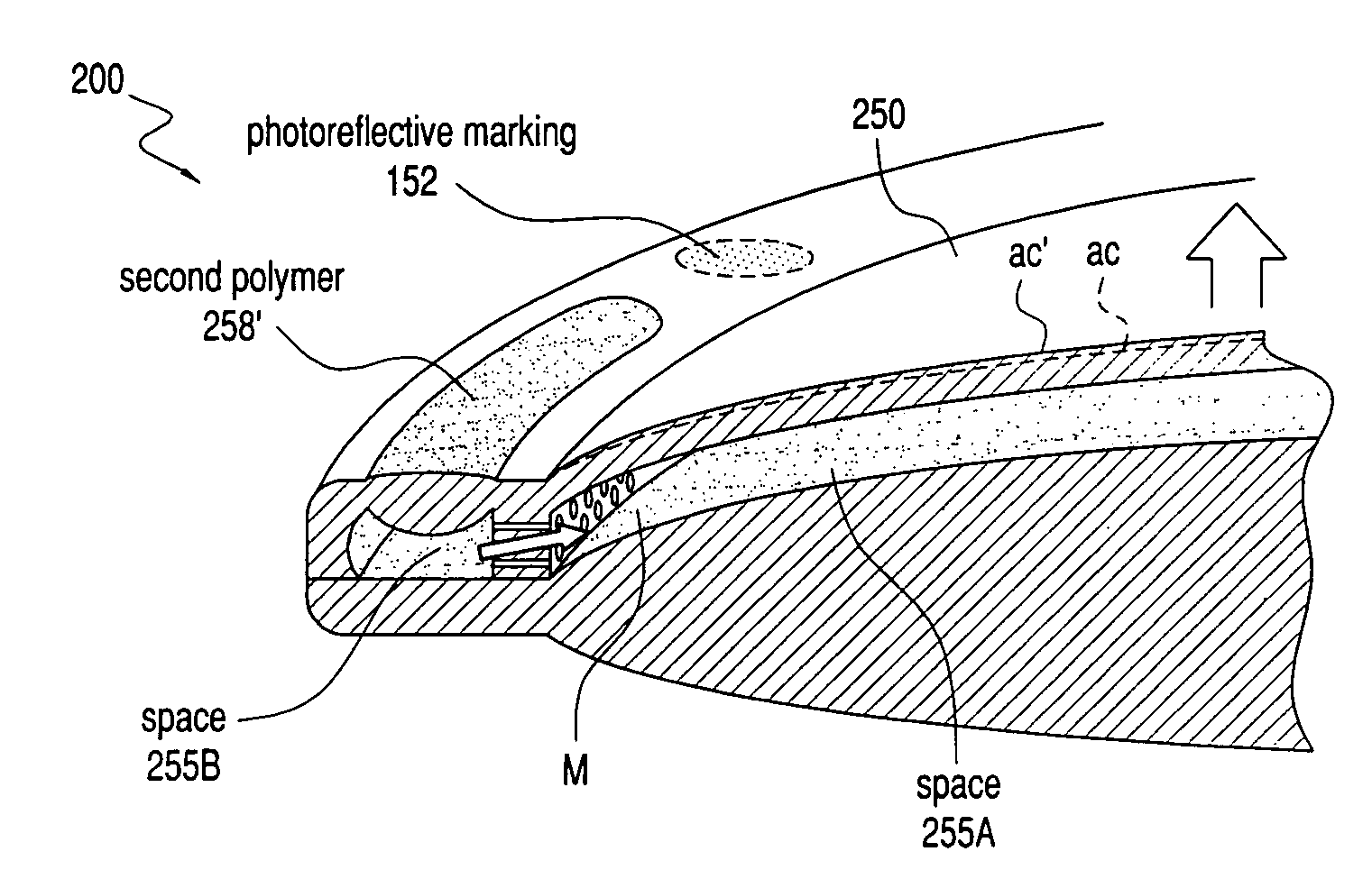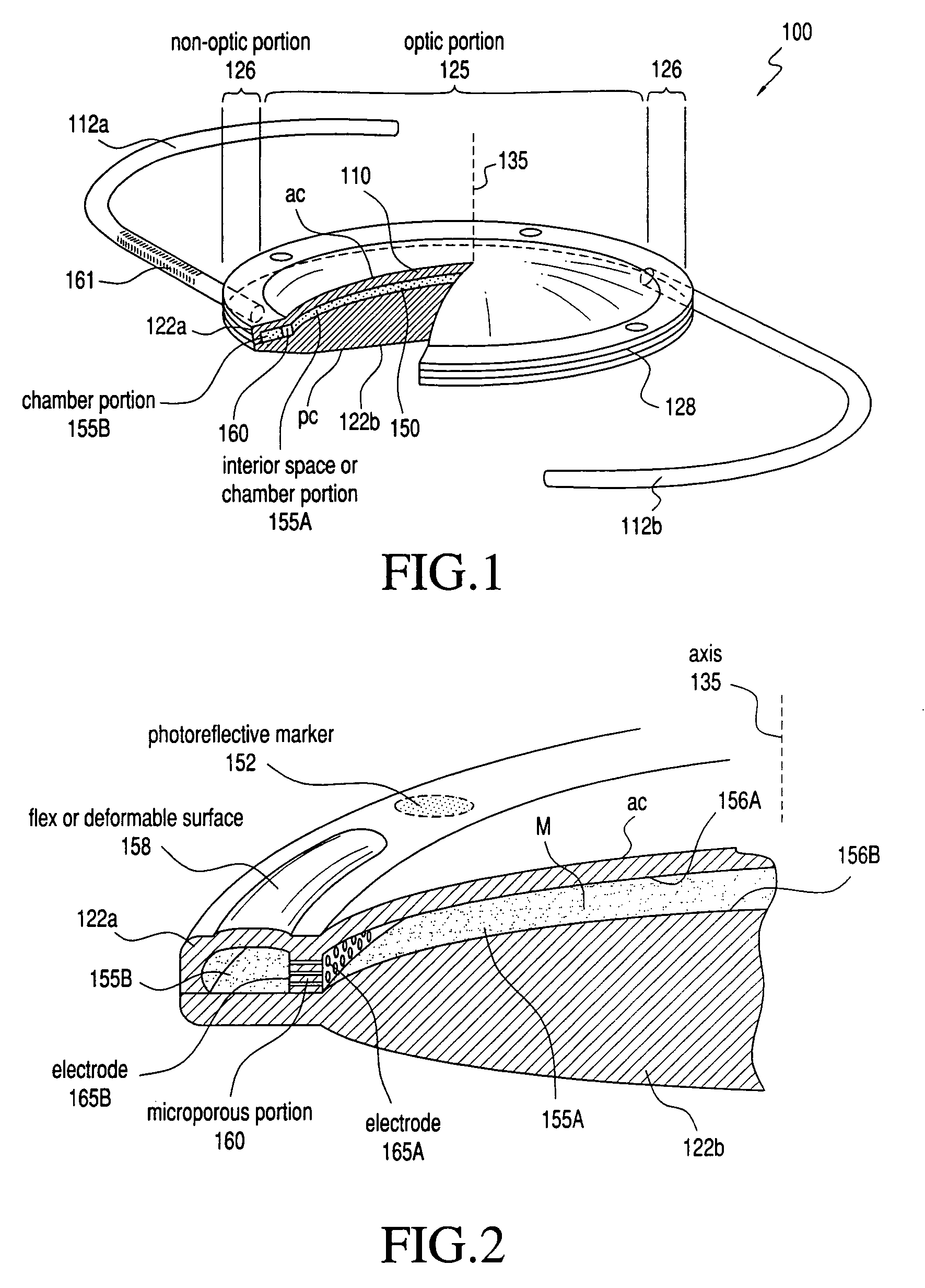Intraocular lens system and method for power adjustment
a technology of power adjustment and intraocular lens, which is applied in the field of intraocular lens, can solve the problems of unpredictable refractive error, substantial difficulties in calculating the proper power of an iol for any particular patient, and achieve the effect of reducing the risk of refractive error
- Summary
- Abstract
- Description
- Claims
- Application Information
AI Technical Summary
Benefits of technology
Problems solved by technology
Method used
Image
Examples
Embodiment Construction
[0030]1. Type “A” intraocular lens. FIGS. 1 and 2 illustrate an intraocular lens 100 (IOL) in accordance with the invention in which the lens body has at least one flexible or deformable surface element 110 that allows for a change in its shape or curvature to adjust the optical parameters of the lens. Deformation and shape adjustment of the surface element 110 in preferred embodiments is caused by fluid flows with an interior space of the lens to displace the surface element, when coupled with energy or stimulus from an external source 115 (see FIG. 4). In an exemplary embodiment, the IOL body 100 is coupled to a haptic portion that comprises radially-extending struts (or haptics) indicated at 112a and 112b in FIG. 1 that are coupled to the lens perimeter. Typically, the haptics 112a and 112b have radial-outward ends that define arcuate terminal portions. The haptics 112a and 112b have a particular length so that the terminal portions create a slight engagement pressure when in con...
PUM
 Login to View More
Login to View More Abstract
Description
Claims
Application Information
 Login to View More
Login to View More - R&D
- Intellectual Property
- Life Sciences
- Materials
- Tech Scout
- Unparalleled Data Quality
- Higher Quality Content
- 60% Fewer Hallucinations
Browse by: Latest US Patents, China's latest patents, Technical Efficacy Thesaurus, Application Domain, Technology Topic, Popular Technical Reports.
© 2025 PatSnap. All rights reserved.Legal|Privacy policy|Modern Slavery Act Transparency Statement|Sitemap|About US| Contact US: help@patsnap.com



